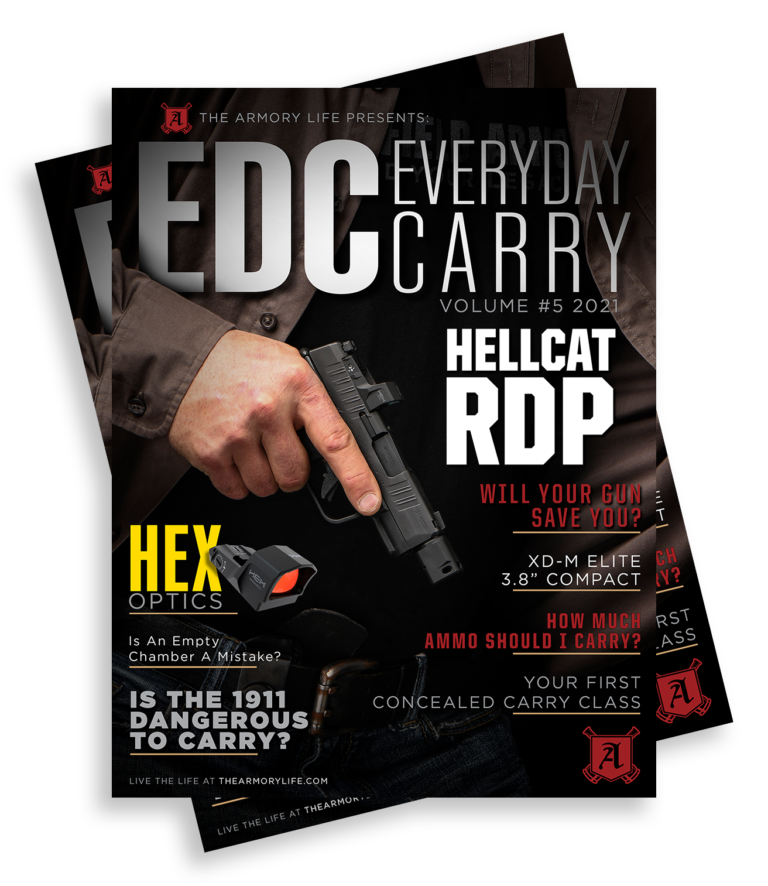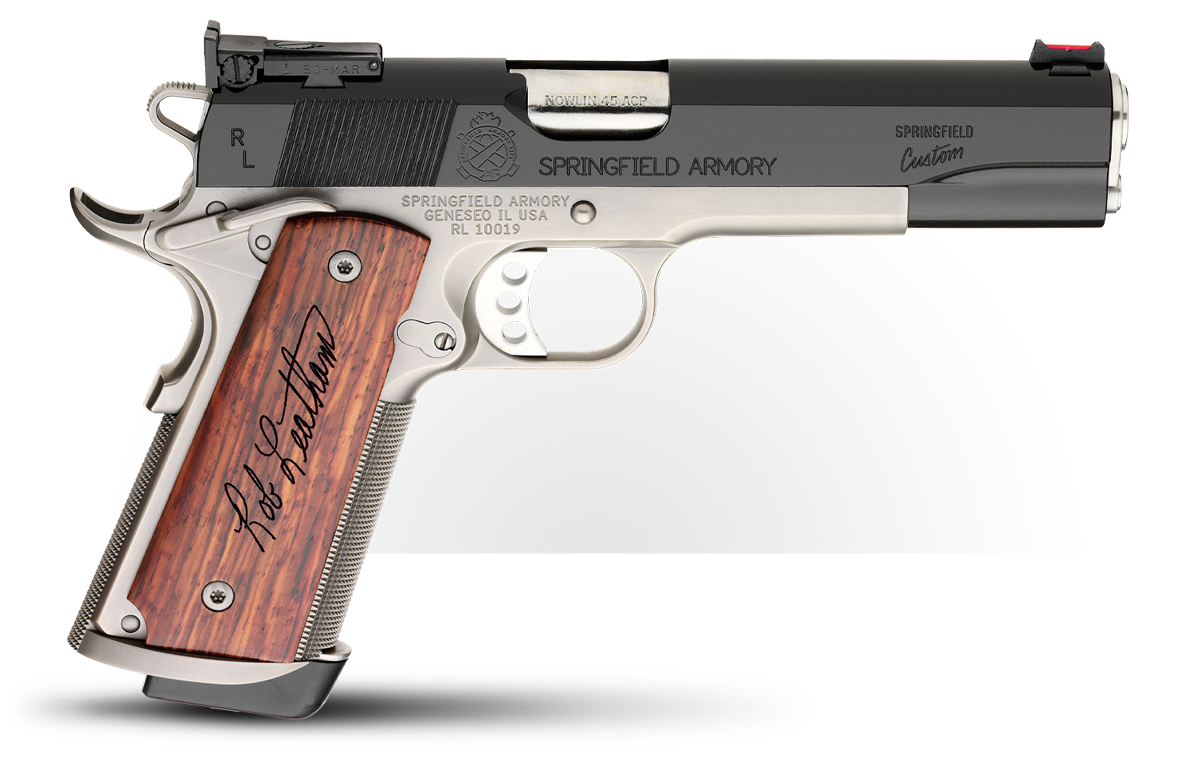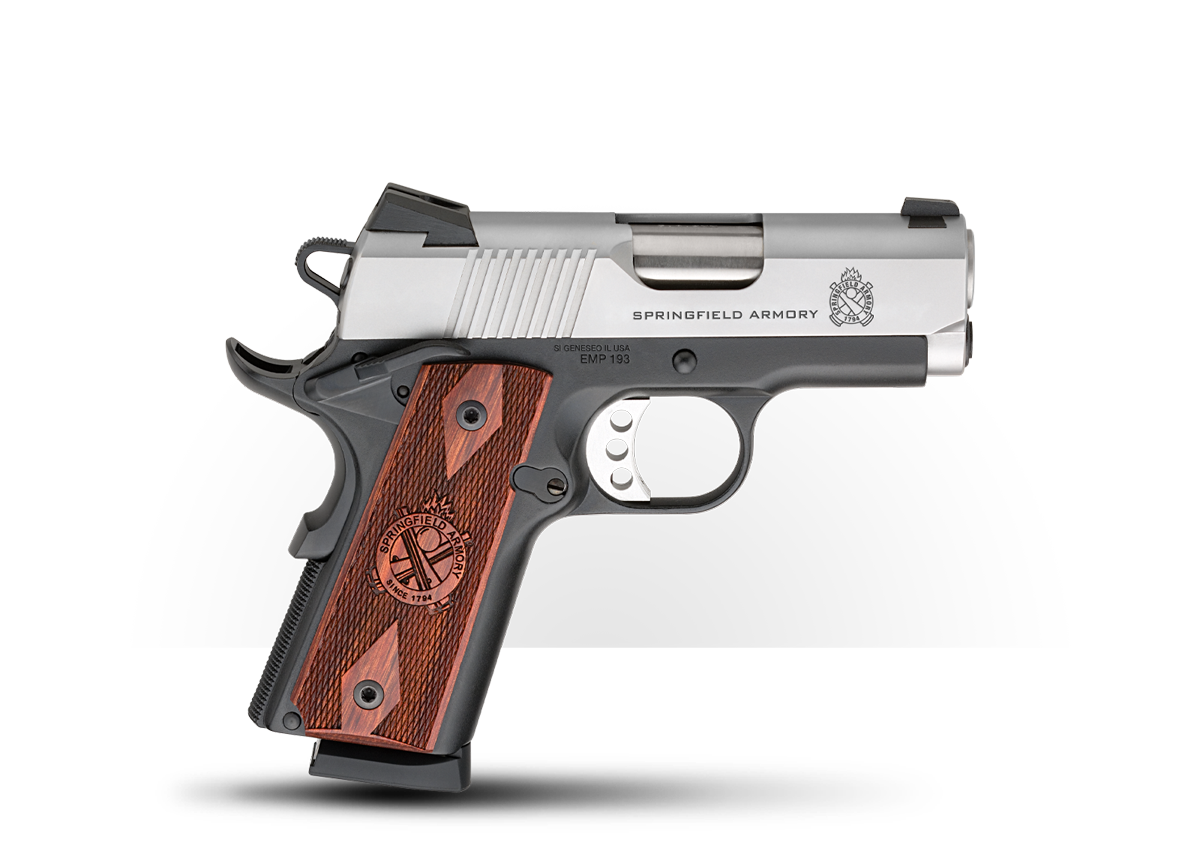Is the 1911 Dangerous to Carry?
August 21st, 2020
5 minute read
Is the 1911 pistol design inherently dangerous? This is a question that many new shooters have asked. A lot of this comes from the fact that the gun is often carried with the hammer cocked, which might appear intimidating to some shooters. But, let’s dig into the details of this incredibly popular and long-lived design to decide for ourselves.
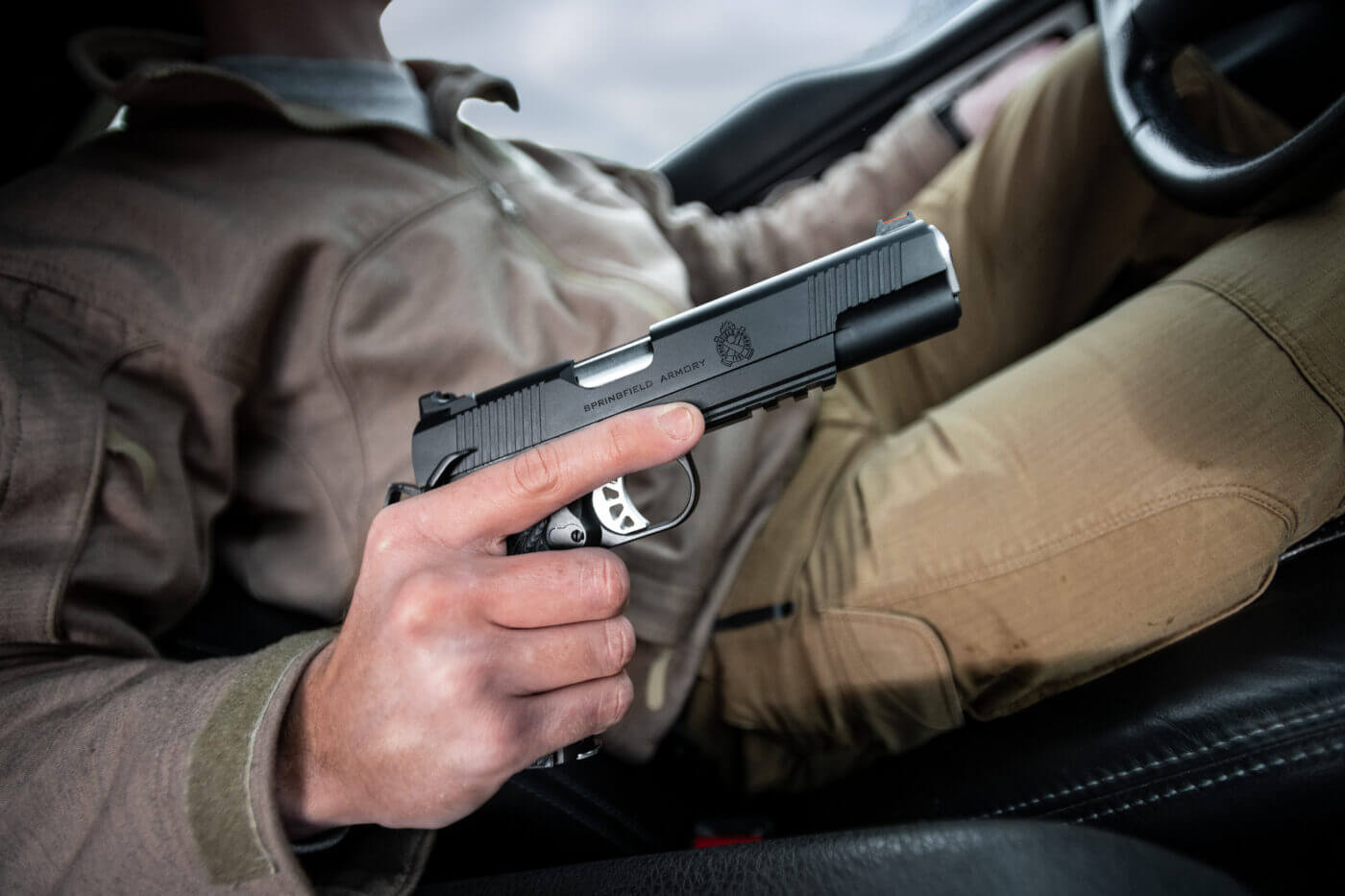
I Would Never…
Is the 1911 “drop safe”? While it has been proven that the original 100-year-old design can discharge from firing pin inertia if dropped on either end, particularly if thousands of trigger pulls have weakened the firing pin spring, this has been corrected on modern designs.
A lightweight firing pin, and/or heavier firing pin spring, make the 1911 inherently drop safe. This is the approach Springfield Armory has taken successfully to its broad line of 1911 pistols. Adding a mechanical firing pin block safety can also work, and some other 1911 manufacturers have taken this approach. However, some complain that this system can affect the 1911’s enviably crisp and clean trigger pull.
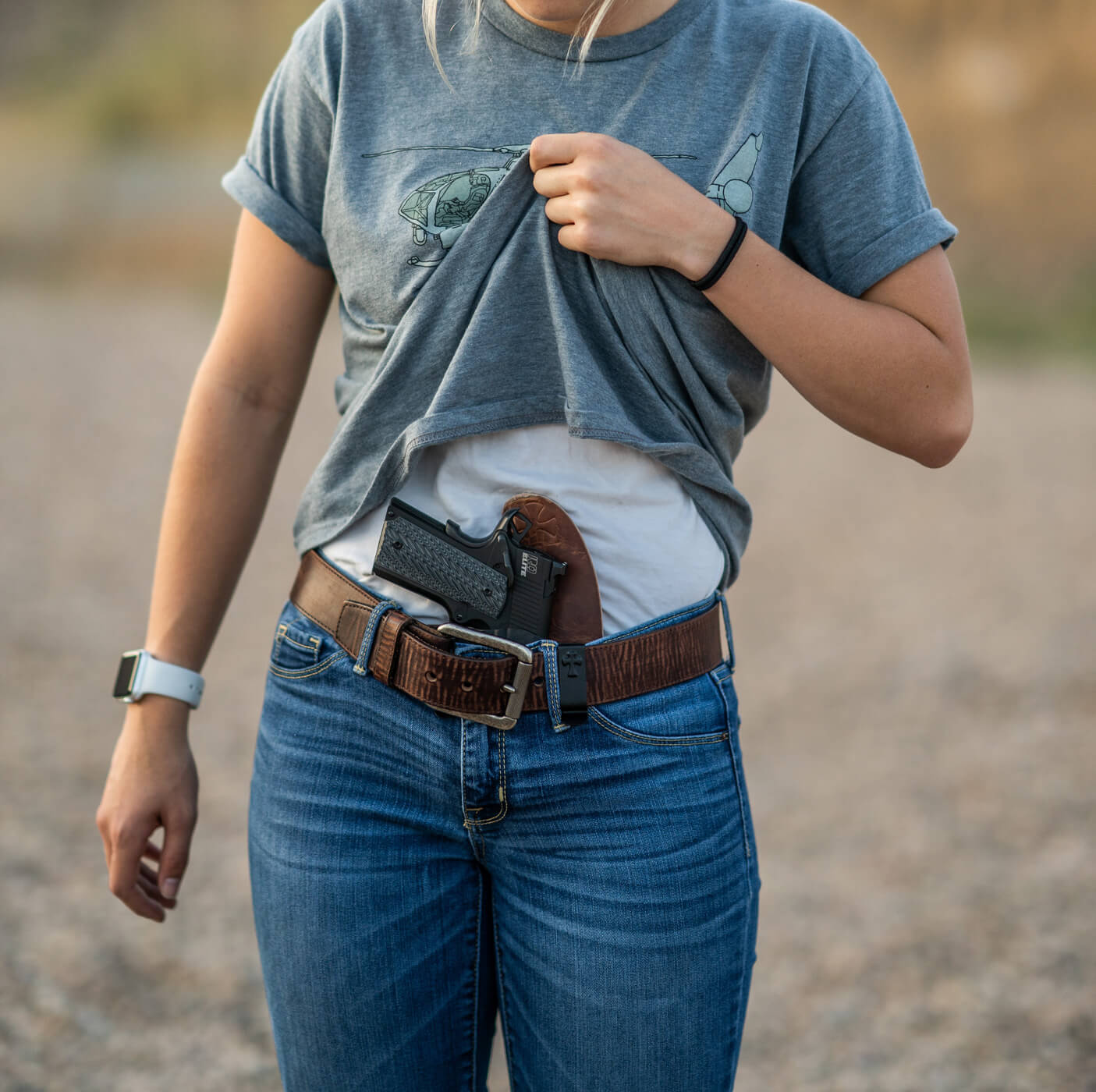
If you’re ever having this discussion with someone and they say smugly, “It doesn’t matter, ’cause I’ll never drop my gun,” try not to laugh in their face. Things get dropped in fights. If that person ever has to fire or even just draw his gun in self-defense, there’s an excellent chance that the first arriving police officer will command, “Drop that weapon!” If they don’t comply, they’re likely to get shot.
About the Safeties
Cardinal design features of the 1911 pistol are the thumb safety and the grip safety. This writer submits that both should be used. Virtually all experts agree that for self-defense, the 1911 should be carried cocked and locked — that is, hammer back and thumb safety engaged with a round in the chamber and a full magazine. (If the hammer is not cocked, the safety on these single-action pistols will not engage; it is “locked off,” so to speak.) Also, when you grip the pistol, the grip safety is automatically disengaged.
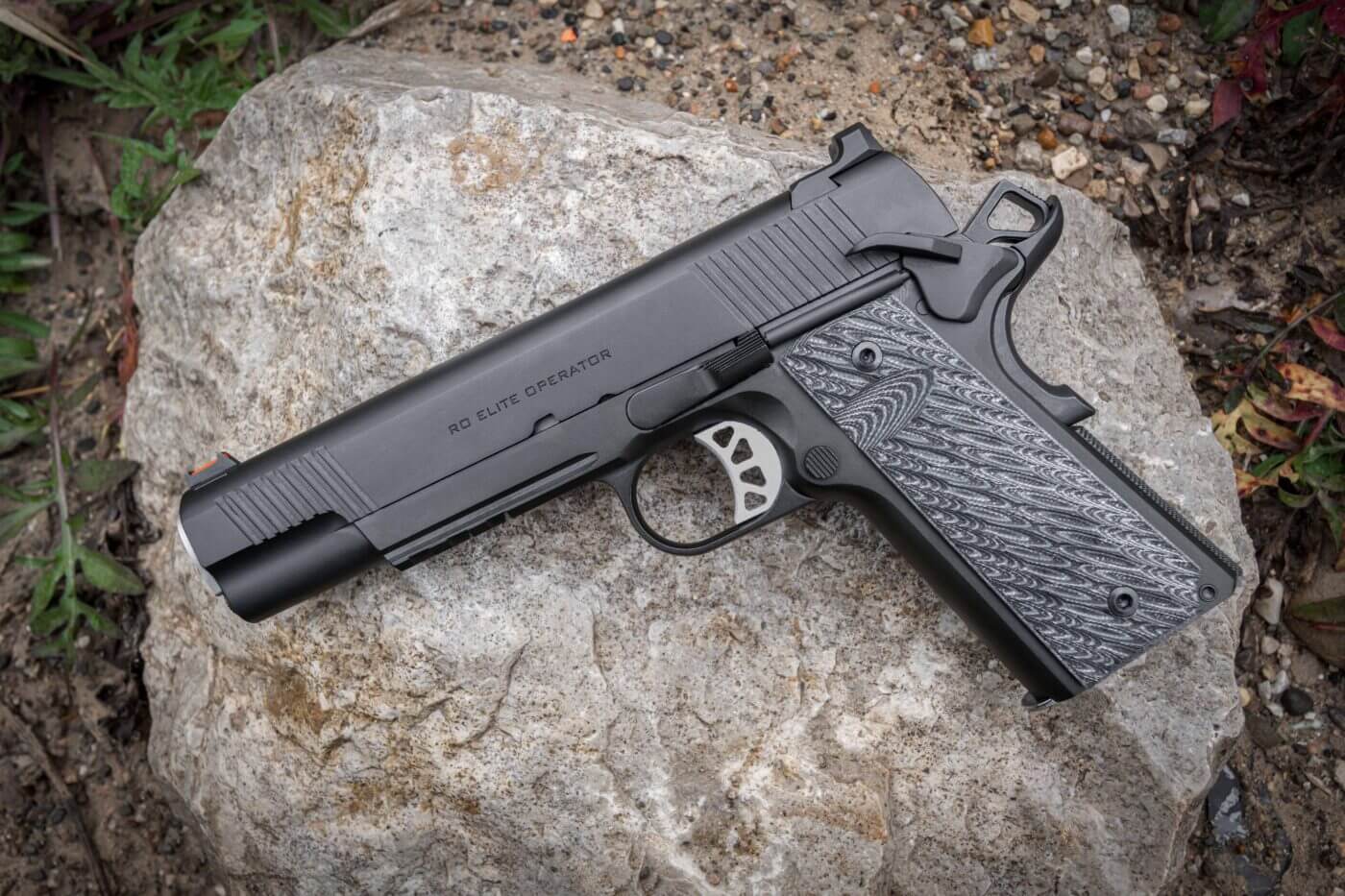
With just a downward press of the thumb on the manual safety, the pistol is ready to fire with its famously good trigger pull. Most of us use the terminology created half a century ago or more by Col. Jeff Cooper, the man some called “the high priest of the 1911 .45,” and refer to cocked and locked carry as “Condition One.”
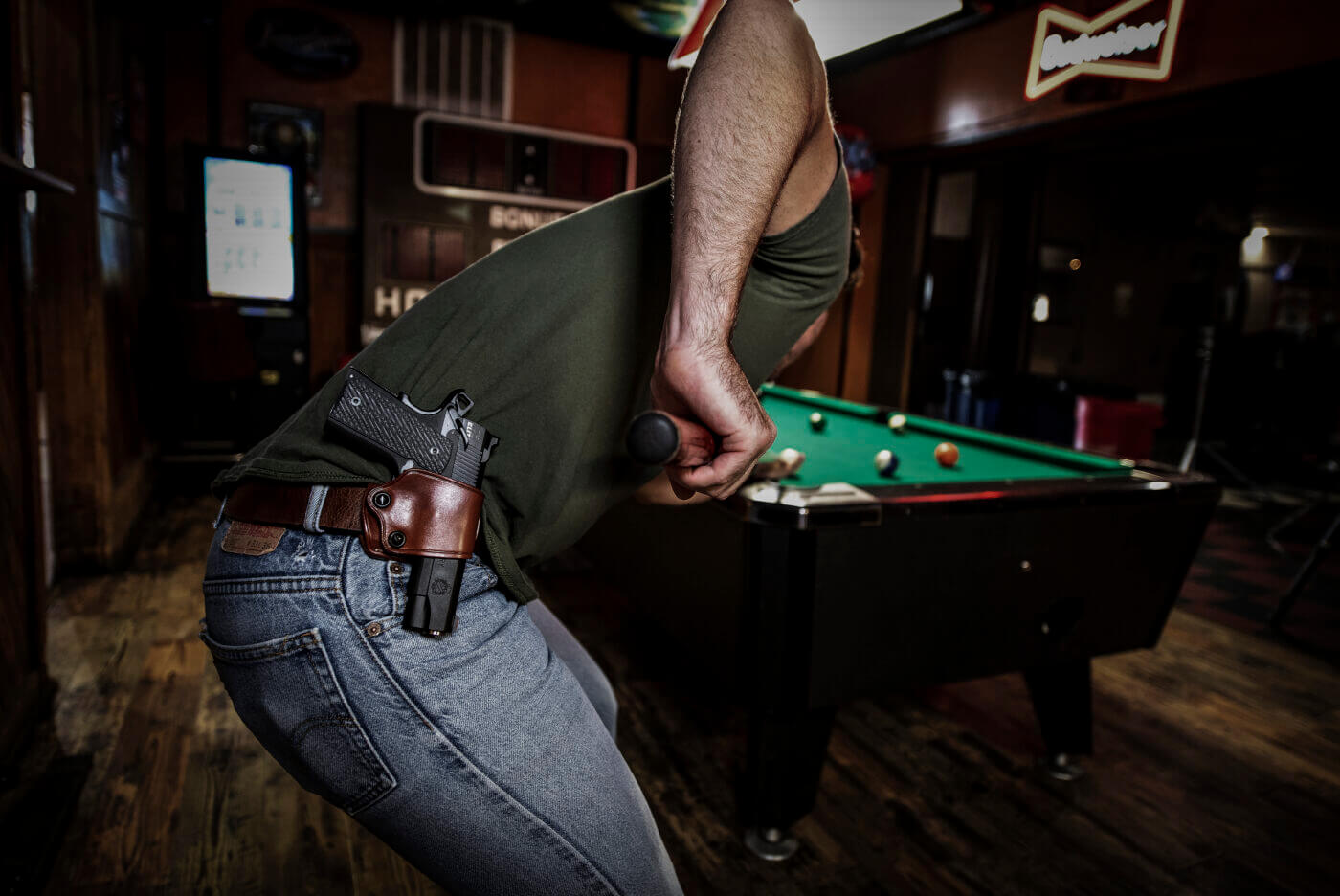
Cooper defined “Condition Two” as fully loaded, but with the hammer down on a live round in the chamber. This is generally deemed less safe because (A) it requires slow and awkward cocking of that rear-mounted hammer, a task perhaps better suited to an orangutan’s paw than the human thumb, and (B) it requires pulling the trigger of a loaded gun to safely lower the hammer, which can easily result in a slip and an unintended discharge.
[Be sure to catch Paul Carlson’s article on how to load a pistol for additional information.]
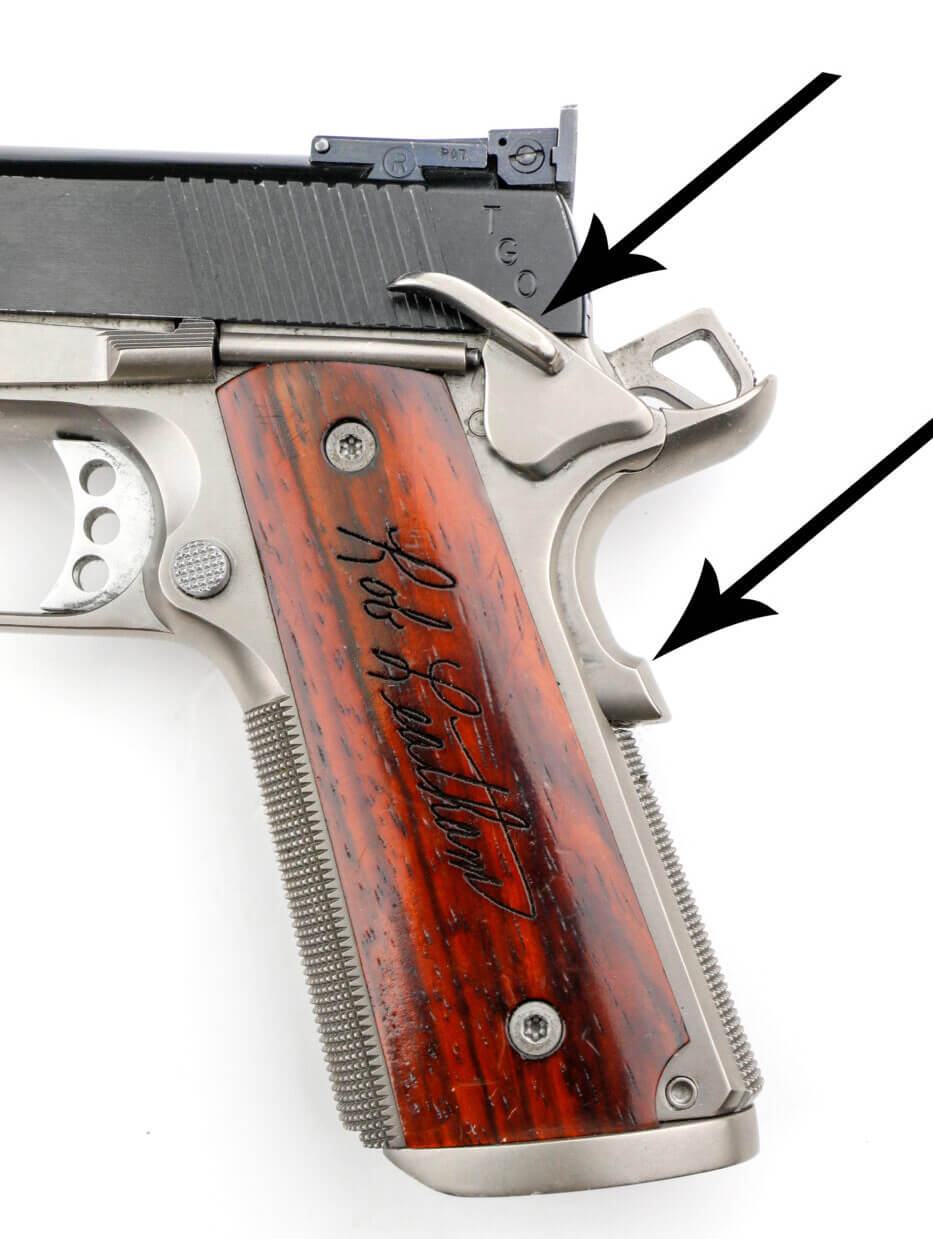
“Condition Three” is hammer down on an empty chamber, with the magazine loaded and inserted. This requires the slide to be racked with the support hand, which may not always be available for the task; one-handed slide-racking can be extremely slow and awkward compared to the simple draw-safety off-fire sequence of Condition One.
Finally, “Condition Four” would be a pistol with magazine well and chamber both empty, and hopefully a full magazine within easy reach should a life-threatening emergency suddenly demand a loaded gun in hand.
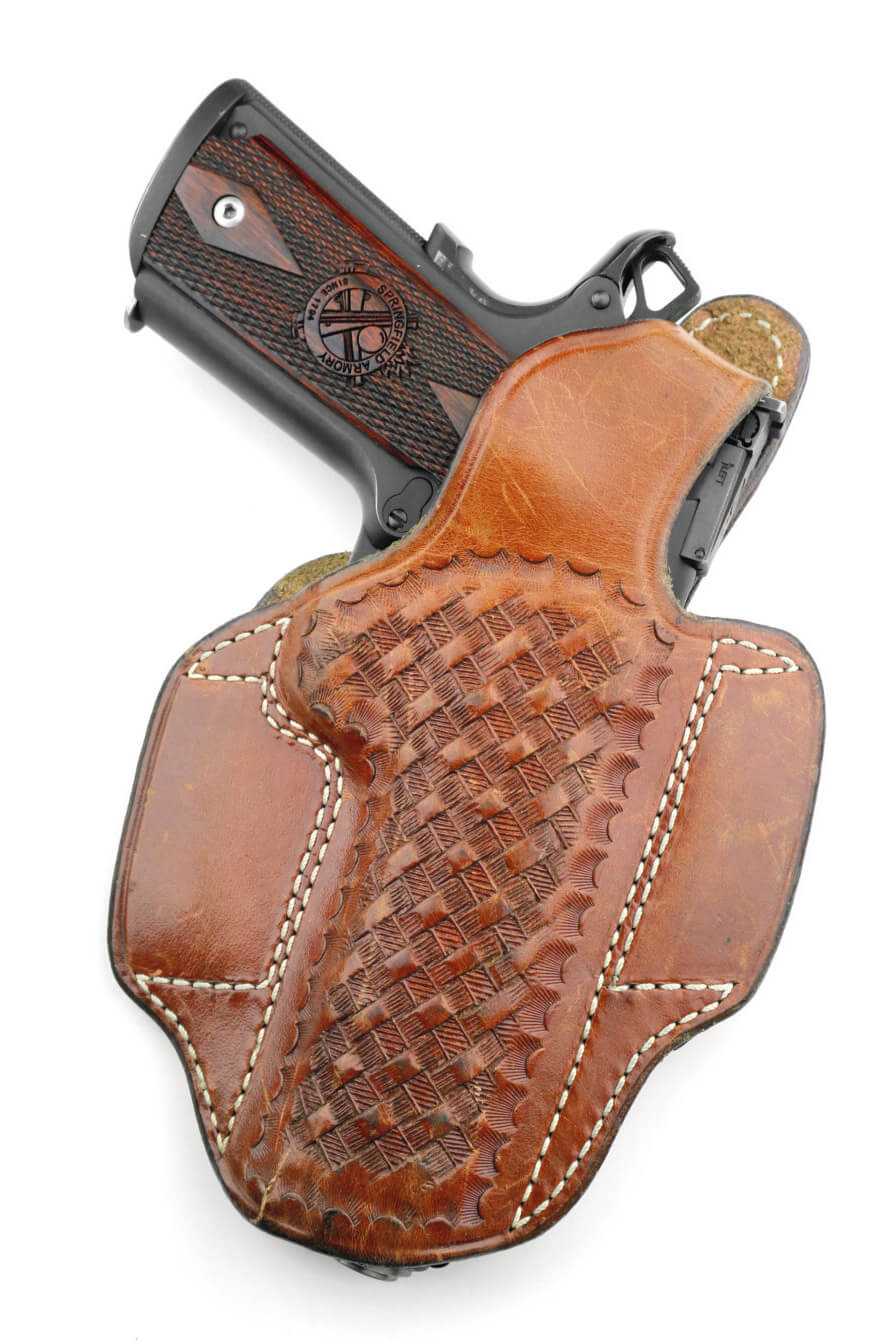
The grip safety is there for a reason, too. There have been cases of people shooting themselves when holstering their pistol because their finger or some foreign object hit the trigger as the gun was going into the scabbard. Holstering the 1911 as shown in the accompanying picture, with thumb on hammer, ensures the grip safety is engaged and the gun cannot discharge even if the shooter has neglected to push the thumb safety upward into the “on-safe” position.
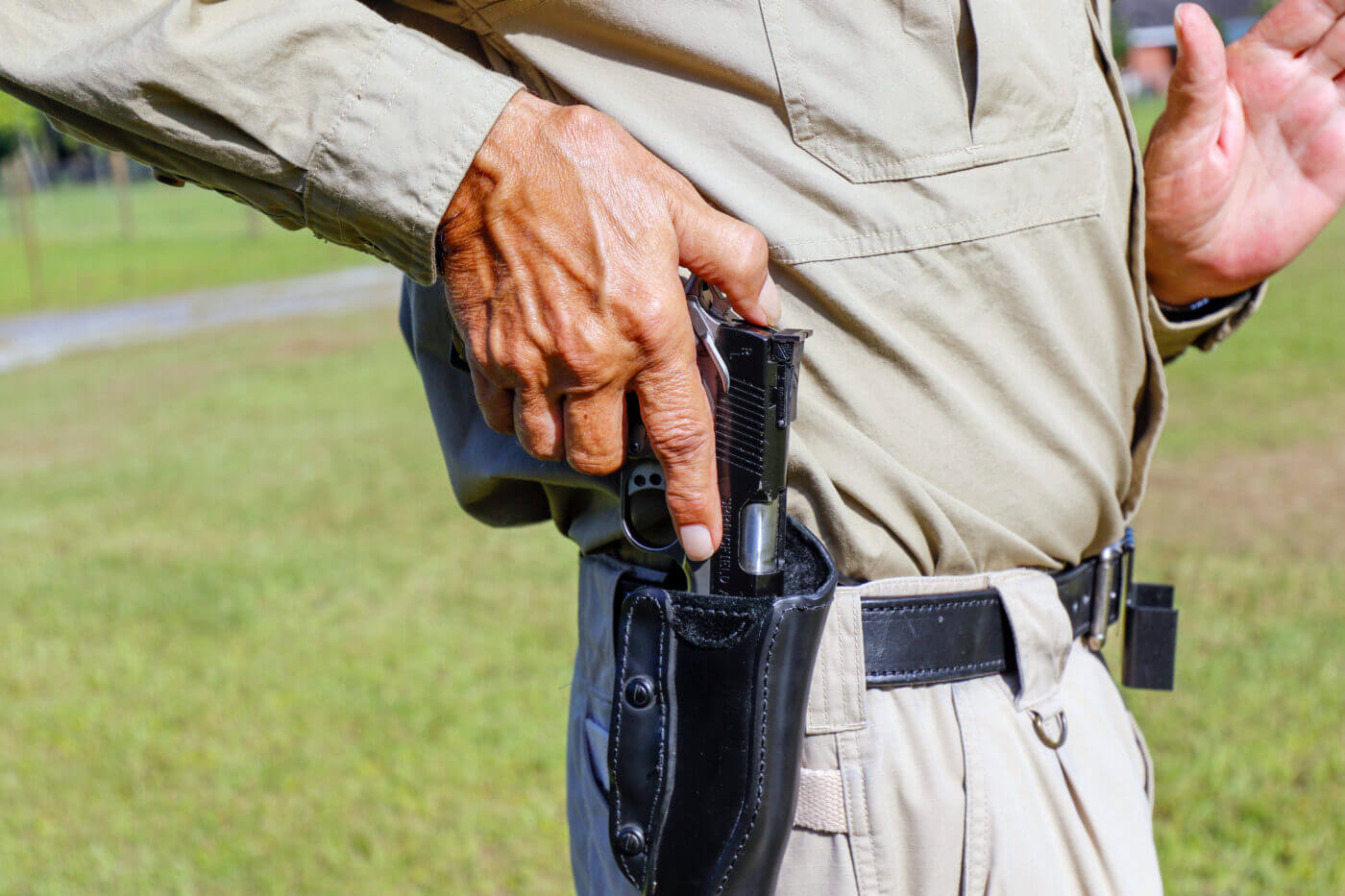
Weapon Retention Factor
The saying among cops is true: “In every fight there’s at least one loaded gun present and up for grabs – yours!” It’s an equally valid concern for the lawfully armed citizen. I’ve been an instructor in handgun retention and disarming since 1980 and a trainer of other instructors since 1990.
I’ve seen cases where a malefactor gained control of a good person’s gun, tried to shoot him or her, and failed because the gun was on-safe and the thug couldn’t figure out “which lever turns on this damn gun.” The weapon retention factor may be the single most important factor in the selection of a cocked-and-locked 1911 pistol for carrying when in harm’s way.
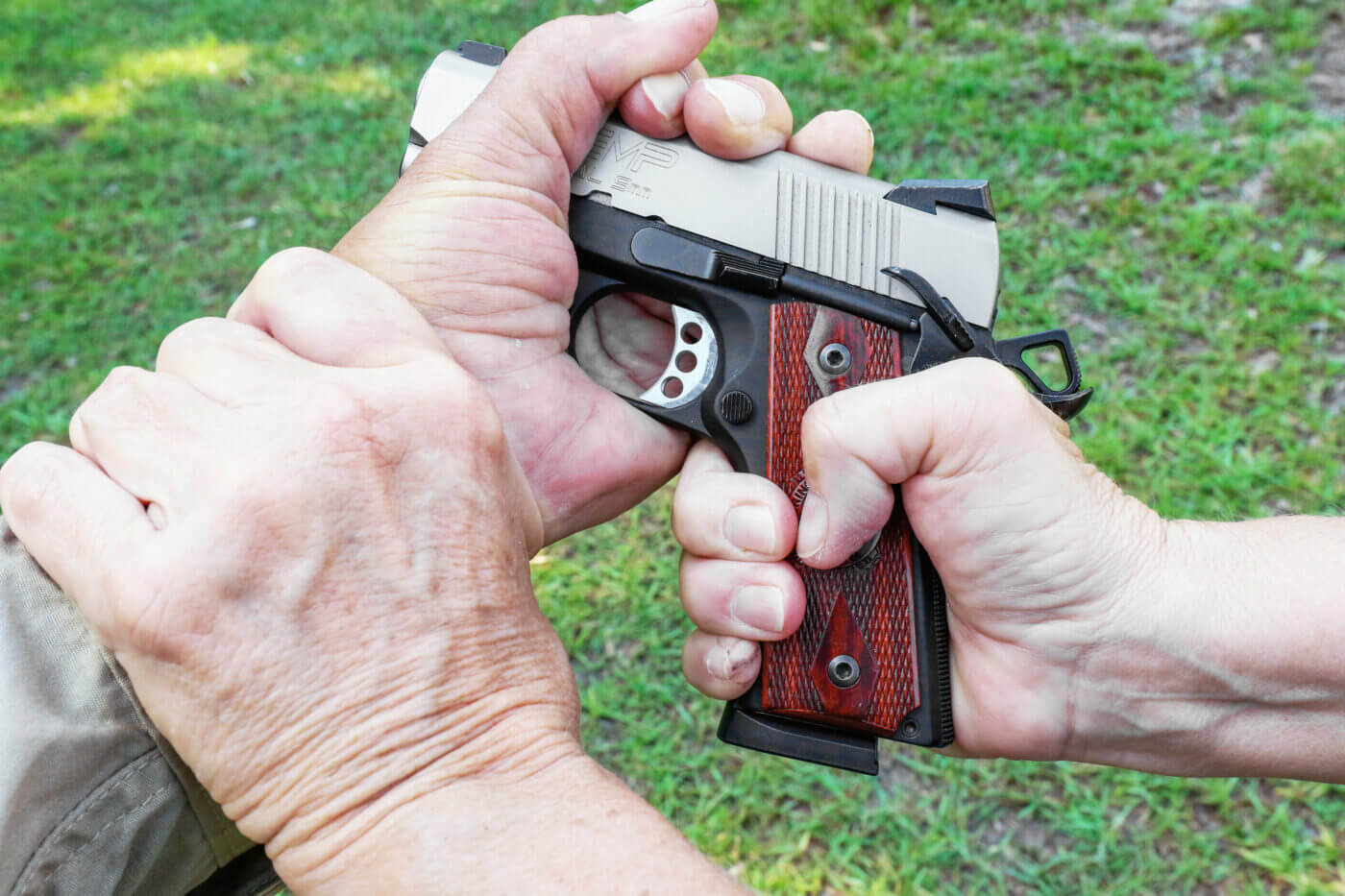
The Bottom Line
With drop-safe construction such as Springfield Armory’s, the cocked-and-locked 1911 is perfectly safe. In fact, it is actually advantageous when there is a struggle over the gun. The 1911 can be a demanding design, but it also can provide a level of performance that makes it worth it!
Editor’s Note: Please be sure to check out The Armory Life Forum, where you can comment about our daily articles, as well as just talk guns and gear. Click the “Go To Forum Thread” link below to jump in and discuss this article and much more!
Join the Discussion
Featured in this article
Continue Reading
Did you enjoy this article?

 838
838




